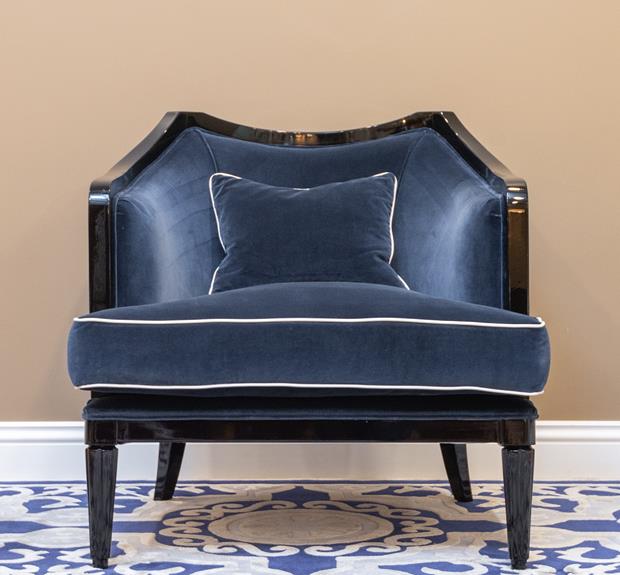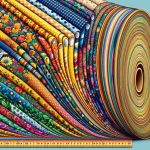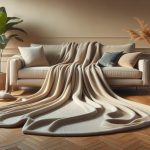When it comes to measuring fabric for chair upholstery, it's like finding the perfect puzzle piece to complete the picture. You want to ensure you have just the right amount – not too little, and certainly not too much.
In this guide, we'll delve into the art of calculating fabric yardage for your chair upholstery project. From factoring in pattern repeats to considering fabric width, you'll gain the mastery needed to confidently measure and cut the fabric for a flawless finish.
So, grab your tape measure and let's unravel the mystery of how much fabric you really need to bring your chair upholstery vision to life.
Key Takeaways
- Accurate measurements of chair dimensions are essential for calculating fabric yardage.
- Consider the fabric pattern and design when estimating yardage.
- Add extra fabric for seam allowances and pattern matching.
- Understanding fabric yardage is crucial for a successful upholstery project.
Understanding Fabric Yardage
To accurately measure fabric yardage for chair upholstery, you need to understand the specific requirements of your chair's dimensions and upholstery style. Measuring fabric for upholstery projects requires precision and careful estimation of yardage. Start by measuring the dimensions of your chair, taking into account the width, length, and height.
Additionally, consider the pattern and design of the fabric, as this can impact the amount of fabric needed. For solid fabrics, you may need less yardage compared to patterns that require matching or centering.
When estimating yardage, it's essential to add extra fabric for seam allowances and pattern matching. Upholstery projects often require more fabric than initially anticipated, so it's wise to err on the side of caution and purchase a bit more than the exact measurements to avoid running short.
Understanding fabric yardage is crucial for a successful chair upholstery project. By taking accurate measurements and carefully estimating yardage, you can ensure that you have enough fabric to complete the job with professional-looking results.
Calculating Fabric Requirements
To accurately calculate fabric requirements for chair upholstery, follow these steps:
- Consider the chair dimensions and the fabric's pattern repeat.
- Measure the length, width, and height of the chair.
- Take into account any extra fabric needed for pattern matching and seam allowances.
- Understanding these points will help you determine the exact yardage needed for a flawless upholstery job.
Chair Dimensions and Fabric
You will need to measure the dimensions of your chair to accurately calculate the fabric requirements. Start by measuring the width, height, and depth of the chair.
The fabric pattern you choose should complement the chair style, enhancing its aesthetic appeal. Consider the following points:
- Emotional Appeal
- Feeling overwhelmed by the variety of fabric patterns and chair styles is common, but with the right measurements, you can confidently select the perfect fabric.
- Picture the satisfaction of seeing the fabric flawlessly fit your chair, enhancing its beauty and comfort.
Accurately measuring your chair and considering the fabric pattern in relation to the chair style will ensure a successful upholstery project, leaving you with a piece that seamlessly integrates into your space.
Pattern Repeat and Fabric
Consider the pattern repeat of the fabric in relation to the chair dimensions, ensuring that your calculations accurately reflect the amount of fabric required for upholstery.
When dealing with patterned fabrics, it's crucial to account for the pattern repeat to ensure proper alignment and pattern matching. The fabric's pattern repeat refers to the distance between the starting point of a pattern and where it repeats. This is essential for achieving a seamless and visually appealing upholstery.
Additionally, take into account the fabric texture, as it can affect the way patterns align and the overall appearance of the chair. Understanding how the pattern repeat and fabric texture interact with the chair's dimensions is vital for determining the precise amount of fabric needed for a flawless upholstery job.
Factoring in Pattern Repeats
How do pattern repeats affect the amount of fabric needed for chair upholstery? When factoring in pattern repeats for chair upholstery, it's crucial to consider the fabric design and pattern placement. This is essential to ensure a cohesive and visually appealing final product.
Here's how pattern repeats influence the fabric needed for chair upholstery:
- Consideration of Pattern Matching:
Understanding pattern matching is crucial for achieving a professional and polished look. It ensures that the pattern aligns seamlessly across the chair, creating a cohesive appearance.
- Calculating Repeats for Pattern Placement:
Calculating pattern repeats helps in determining the exact amount of fabric required, ensuring that the pattern is positioned correctly on the chair. This precision is essential for achieving a high-quality finish.
Considering pattern repeats in fabric selection and upholstery planning is essential for achieving a professional and visually pleasing result. By factoring in pattern repeats, you can ensure that the fabric design is showcased seamlessly, elevating the overall aesthetic of the chair upholstery.
Considering Fabric Width
When factoring in pattern repeats for chair upholstery, it's essential to also consider the fabric width to accurately determine the amount of fabric needed for the project. The width of the fabric plays a crucial role in calculating the total yardage required for upholstery. Most upholstery fabric comes in standard widths of 54 inches or 60 inches, but it's essential to verify the specific width of the fabric you plan to use for your chair project.
Fabric stretchability is another important factor to consider when determining the fabric width needed for chair upholstery. Some fabrics have more stretch than others, and this can affect how the fabric is laid out and cut for the upholstery process. Understanding the stretchability of the fabric will help you determine if you need to adjust the fabric width to accommodate for stretching during the upholstery process.
Additionally, when working with patterned fabrics, it's crucial to consider fabric pattern alignment across the width. Depending on the pattern repeat and the width of the fabric, you may need to purchase extra yardage to ensure proper alignment and pattern matching for the upholstery project.
Taking these factors into account will ensure that you accurately calculate the fabric width needed for your chair upholstery, resulting in a professional and polished finished product.
Adjusting for Upholstery Type
When it comes to adjusting for upholstery type, it's crucial to consider the specific fabric you'll be working with. Different upholstery types, such as textured, patterned, or vinyl fabrics, may require varying amounts of yardage for proper coverage.
Understanding how the characteristics of each upholstery type impact the fabric yardage needed will ensure that your chair upholstery project turns out just the way you envision.
Upholstery Fabric Types
When choosing upholstery fabric for your chair, consider the different types available to ensure the best fit for the specific upholstery type.
- Fabric Durability: Upholstery fabric durability is crucial, especially for high-traffic chairs. Durable fabrics like leather and heavy-duty synthetic materials offer longevity, making them ideal for chairs that see frequent use. Consider the durability of the fabric to ensure your chair remains in good condition for years to come.
- Color Options: The color of your upholstery fabric can significantly impact the overall aesthetic of the chair. Bold, vibrant colors can add a pop of personality to your space, while neutral tones offer versatility and timeless elegance. Choose a color that resonates with your style and complements the existing decor in your home. The right color can breathe new life into a tired chair, elevating the entire room's ambiance.
Adjusting Fabric Yardage
Considering the nature of your upholstery fabric and its durability, it's essential to adjust the fabric yardage based on the specific type of chair upholstery you're working with. When working with a fabric pattern, especially one with a large repeat, you'll need to account for pattern matching and may require additional yardage.
For solid fabrics or small, simple patterns, less yardage may be necessary. Similarly, fabric texture plays a role in yardage adjustment. If your fabric has a raised texture or nap, such as velvet or chenille, more fabric will be needed to ensure proper pattern alignment and seamless upholstery.
On the other hand, smooth fabrics may require less yardage. Always consider the specific characteristics of your upholstery fabric to adjust the yardage accurately and avoid running short.
Accounting for Additional Fabric Needs
To ensure you have enough fabric for chair upholstery, calculate the additional needs for seam allowances and pattern matching.
When accounting for additional fabric needs, it's crucial to consider the following:
- Seam Allowances: The extra fabric required for seam allowances ensures that you have enough material to neatly tuck and secure the fabric around the edges of the chair. Without this additional fabric, you may find yourself struggling to neatly finish the edges, leading to a less professional-looking result. It can be frustrating to realize you don't have enough fabric to properly finish the seams, especially after putting in so much effort into the upholstery project.
- Pattern Matching: For patterned fabric, it's essential to account for extra yardage to ensure the patterns align correctly on different sections of the chair. Failing to consider this additional need can result in a visually unappealing mismatch of patterns, which can be disappointing after putting in the time and effort to upholster the chair.
Frequently Asked Questions
Can I Use Different Fabrics for Different Parts of the Chair Upholstery, or Should I Use the Same Fabric Throughout?
You can absolutely use different fabrics for various parts of chair upholstery. It adds visual interest and allows you to play with different textures, upholstery styles, and patterns. Just ensure the fabrics coordinate well for a cohesive look.
Are There Any Specific Fabric Types That Are Better for Certain Upholstery Types, Such as a Recliner Versus a Dining Chair?
When choosing fabric for upholstery, consider durability for a recliner, like leather or heavy-duty woven. For dining chairs, opt for stain-resistant options. Coordinate colors for a cohesive look. It's essential to ensure the fabric fits the chair's purpose.
How Do I Factor in Fabric for Any Additional Decorative Elements or Trims That I Want to Add to the Upholstery?
When calculating trims and embellishment fabric usage, consider the impact on chair uniformity. If mixing fabrics, ensure they complement each other. Add 10-15% extra for trims and embellishments to account for their unique requirements.
Is There a Recommended Method for Matching Patterns Across Multiple Pieces of Upholstery, Such as for a Set of Dining Chairs?
When matching patterns across multiple upholstery pieces, start by selecting fabric that complements each other. Consider the scale and orientation of the pattern. To ensure alignment, cut all pieces in the same direction. It's crucial for a cohesive look.
What Should I Consider When Purchasing Extra Fabric for Future Repairs or Touch-Ups?
When purchasing fabric for future repairs or touch-ups, consider the fabric blending for a seamless look. Plan ahead for extra fabric to ensure you have enough for future needs. It's essential for long-term maintenance and preserving your upholstery.
- Tetron Fabric for Marine Applications: Durability and Use Cases - June 18, 2025
- Tetron Fabric for Outdoor Furniture: Weather Resistance and Care - June 18, 2025
- Tetron Fabric for Wall Coverings: Style and Application Tips - June 18, 2025







